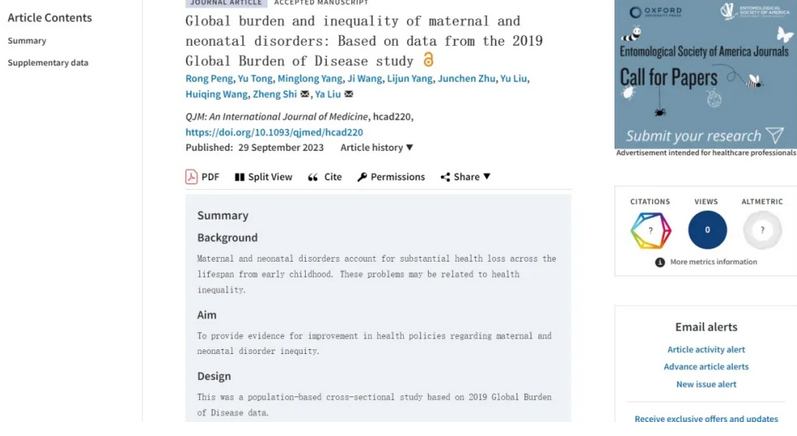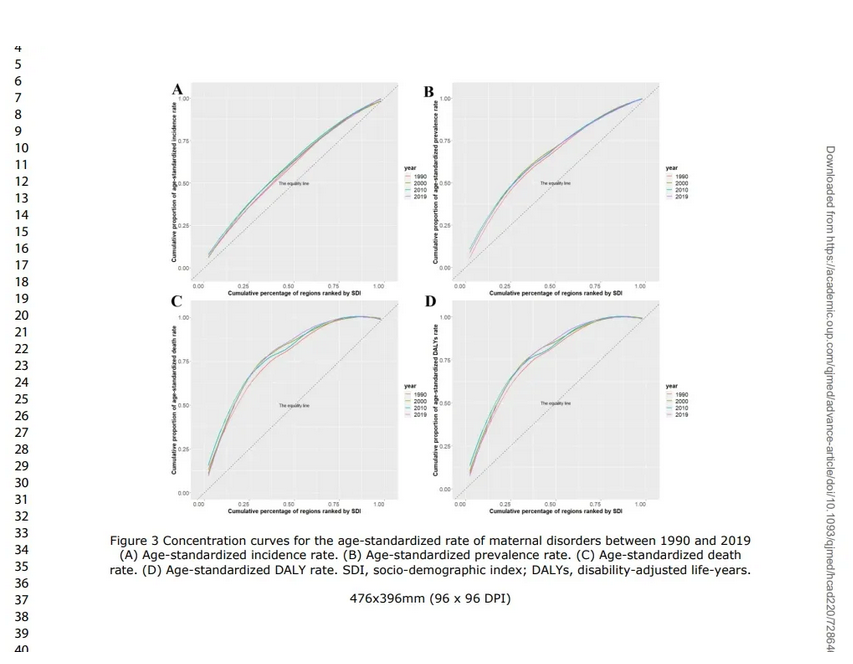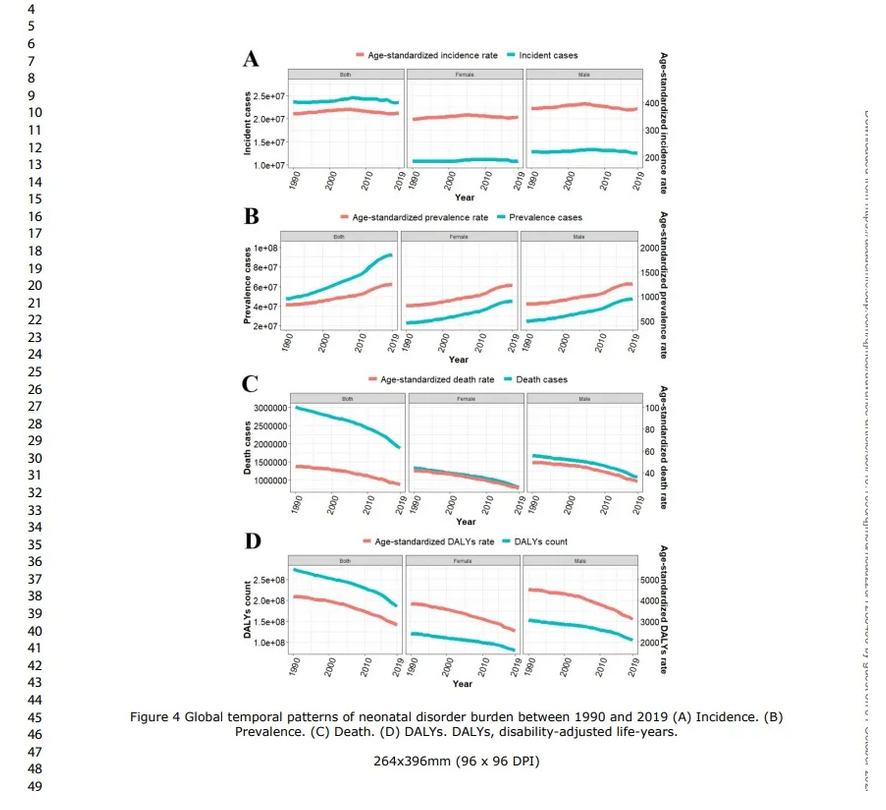【Academic Frontier】Chengdu University and West China Second Hospital of Sichuan University Multidisciplinary Team Publishes in International High-Level Journal

On September 29, a multidisciplinary team from Chengdu University in collaboration with West China Second Hospital of Sichuan University published a research paper titled "Global burden and inequality of maternal and neonatal disorders: Based on data from the 2019 Global Burden of Disease study" in the QJM: An International Journal of Medicine, a publication of the British Medical Association. The study systematically collected all disease burden data related to maternal and neonatal diseases from the 1990-2019 Global Burden of Disease (GBD) database, providing a systematic exposition of the global burden and inequality of maternal and neonatal diseases, offering strong evidence for health policies aimed at improving global inequalities in maternal and neonatal diseases. Dr. Rong Peng from Chengdu University is the first author of this study, Professor Shi Zheng, the deputy secretary-general of our association, and Professor Liu Ya are the co-corresponding authors of this paper, and Professor Wang Huiqing from West China Second Hospital of Sichuan University, among others, participated in this research.

According to the latest data released by the World Health Organization (WHO), the global maternal mortality rate remains at about 211 deaths per 100,000 pregnant women, resulting in approximately 295,000 maternal deaths in 2017. At the same time, of the 130 million infants born each year, about 4 million die during the neonatal period. These figures indicate a severe global burden of maternal and neonatal diseases, making maternal and neonatal health a top priority in global public health. However, there is currently an issue with the availability of epidemiological data related to the burden of maternal and neonatal diseases, especially in economically underdeveloped areas where the burden of these diseases is even more severe. Against this backdrop, conducting a global analysis of the burden and inequality of maternal and neonatal diseases can help assess the effectiveness of maternal and neonatal disease medical systems in various countries and provide important references for governments to formulate health policies.

The multidisciplinary team from Chengdu University and West China Second Hospital of Sichuan University deeply mined the 2019 Global Burden of Disease (GBD) database, collecting data on incidence, prevalence, mortality, disability-adjusted life years (DALYs), and age-standardized rates (ASRs) of global maternal and neonatal diseases. They used the concentration curve and concentration index methods to analyze the global burden and inequality of maternal and neonatal diseases. The results show that from 1990 to 2019, the number of deaths, mortality rates, and disability-adjusted life years due to maternal and neonatal diseases have decreased globally, while the number of cases of maternal and neonatal diseases remains stable, and the number of cases and incidence rates of neonatal diseases have generally increased. Among them, about 24% of maternal diseases are caused by maternal hemorrhage, and about 37% of neonatal diseases are caused by neonatal prematurity. In addition, region, year, age, cause category, and the Socio-demographic Index (SDI) are important factors affecting the burden of maternal-related diseases. In the burden of neonatal diseases, region, year, gender, age, cause category, and the Socio-demographic Index are the main factors. It is worth noting that impoverished areas face a greater burden of maternal and neonatal diseases, and socio-economic-related disease inequality (favoring the poor) has not been alleviated in the past 20 years.

This study aims to address the issue of insufficient availability of epidemiological data related to the burden of maternal and neonatal diseases, providing evidence for the epidemiological situation of the burden of these diseases and the development trend of disease inequality. It fully understands the factors affecting the burden and inequality of maternal and neonatal diseases, guiding the formulation of health department policies, helping to prevent and reduce the risk of maternal and neonatal diseases, and improving the level of maternal and neonatal health.
It is reported that the QJM: An International Journal of Medicine is a long-standing comprehensive medical journal that focuses on internal medicine and publishes peer-reviewed articles in the field of medicine and clinical practice, promoting medical science and practice. The journal is ranked in the Q1 category of the Journal Citation Reports (JCR), with the latest impact factor for 2022-2023 being 13.3, ranking 16th out of 167 in the MEDICINE, GENERAL & INTERNAL category. The papers published in this journal are of great significance to experts in the field of internal medicine.
Article link: https://academic.oup.com/qjmed/advance-article/doi/10.1093/qjmed/hcad220/7286460

